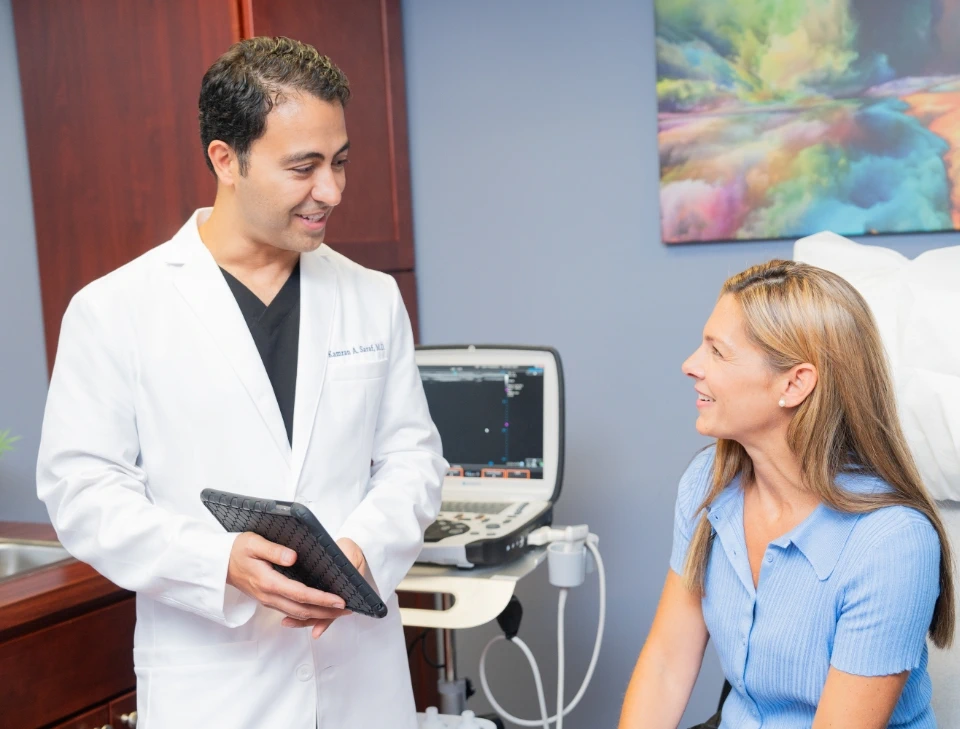What to Expect After Vein Ablation?
Endovenous vein ablation, also known as radiofrequency ablation or laser ablation, is one of the most reliable and effective treatments for varicose veins and chronic venous insufficiency. This procedure is meant for patients with vein disease, a circulatory disorder wherein the collapse of vein valves leads to the accumulation of blood in leg veins. If you’re undergoing the endovenous ablation therapy of incompetent veins, you probably have questions about the post varicose vein surgery care and aftercare guidelines. Below, we describe what you can expect after vein ablation.

Expect mild post-treatment side effects
You can expect mild post-treatment side effects after endovenous ablation. You should prepare for mild swelling after vein ablation — your legs and ankles will be swollen for a few days. The swelling occurs because tumescent anesthesia is injected around the veins during the procedure, so it makes your legs seem swollen. The swelling will be apparent in the region around the treated vein. Other common side effects include mild redness, discomfort, irritation, and bruising around the treatment sites.
Wear ACE bandages for 24 hours
You need to wear ACE bandages for 24 hours after the endovenous ablation therapy of incompetent veins. After the minimally invasive vein treatment, it’s extremely important to apply pressure on your veins to prevent blood from flowing back and accumulating in the leg veins. An ACE bandage applies pressure on the leg veins, thus preventing the recurrence of vein disease. Furthermore, wearing an ACE bandage also improves the side effects of vein disease.

Wear compression stockings for 72 hours
You must wear compression stockings for at least 72 hours after the vein treatment. Compression stockings are skin-tight garments that apply pressure on the leg veins and push the accumulated blood towards the heart. You need to wear compression stockings to improve the results, minimize and reduce swelling, and facilitate optimal recovery. Even after the first 72 hours, you should continue wearing compression stockings for intermittent periods for several days.
Walk frequently throughout the day
You must walk frequently throughout the day to facilitate optimal blood circulation to the heart. When you walk, your calf muscles push the blood in your legs towards the heart, thus preventing the accumulation of blood in leg veins. You should ideally take two 30-minute walks in a day and, if possible, walk for shorter periods throughout the day. You should also avoid sitting or standing for long periods — take walking breaks in between.
Avoid heavy lifting for a few days
You should avoid lifting heavy objects for a few days after your endovenous vein ablation procedure. When you lift heavy objects, you place more pressure on the leg veins, thus increasing the risk of collapsed veins or blood accumulation in leg veins. You can resume most of your daily activities, but please avoid heavy lifting for a few days.
Resume your daily activities and work immediately
You can resume most of your daily activities and work immediately after endovenous ablation therapy. Minimally invasive procedures, such as laser ablation and radiofrequency ablation, don’t involve any downtime or extended recovery period. The radiofrequency ablation varicose veins recovery time is minimal — most of our patients seek treatment during their lunch break, following which they resume most of their daily activities.
Who Needs Endovenous Vein Ablation?
Endovenous vein ablation is meant for patients with chronic venous insufficiency, the root cause of most vein problems. Venous insufficiency is a chronic circulatory disorder caused by the collapse of vein valves. In healthy veins, the valves act as one-way doors that ensure smooth one-way blood circulation to the heart, often against the force of gravity. When your vein valves collapse, gravity forces blood to flow backward and accumulate in the leg veins, leading to vascular dilation and the eventual formation of spider veins and varicose veins.
You may need endovenous vein ablation if you have any of the signs and symptoms of vein disease. The earliest signs of vein disease include leg heaviness, restless leg syndrome, frequent leg cramps, leg discomfort, and spider veins. But as the condition worsens, you may also notice varicose veins, skin discoloration around the veins, non-healing leg wounds or ulcers, and blood clots in leg veins (deep vein thrombosis). If you notice these problems, please contact our vein doctors for a thorough diagnosis and treatment for varicose veins.
What Happens During Vein Ablation?
Endovenous vein ablation can be performed using two techniques — radiofrequency ablation and laser ablation. Both vein ablation techniques have the same goal, but they’re performed using different techniques. Below, we describe the two vein ablation techniques.
Radiofrequency Ablation
Radiofrequency ablation involves using thermal energy to destroy the diseased saphenous vein. The vein doctor channels thermal energy to collapse the diseased vein, and the accumulated blood reroutes into healthier leg veins.
Laser Ablation
Laser ablation involves using laser energy to destroy the diseased saphenous vein. The vein doctor channels laser energy into the diseased vein via a laser fiber. The diseased vein is destroyed, and the accumulated blood flows into healthier leg veins.
Vein Stripping vs. Ablation
Vein stripping is the traditional surgical procedure for varicose veins. Vein stripping is a surgical technique wherein the vein doctor physically removes the diseased saphenous vein from the body. It’s performed under general anesthesia, involves multiple excisions, and the recovery period lasts for several days or weeks. Compared to vein stripping, vein ablation is a minimally invasive outpatient procedure that concludes within 30 minutes and involves no downtime. Vein ablation is also more effective and has a lower rate of recurrence.
You should only look for vein doctors who provide endovenous vein ablation and other minimally invasive vein treatments. Please avoid vein stripping and other surgical procedures.








